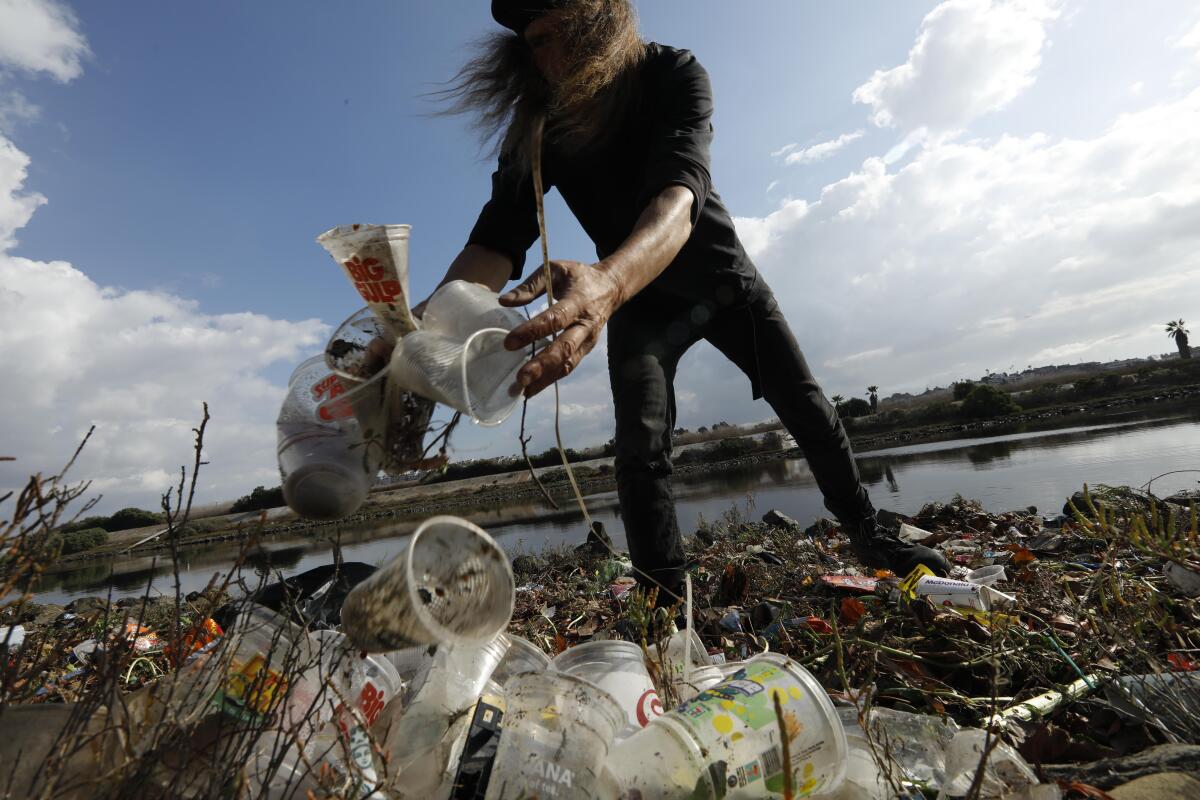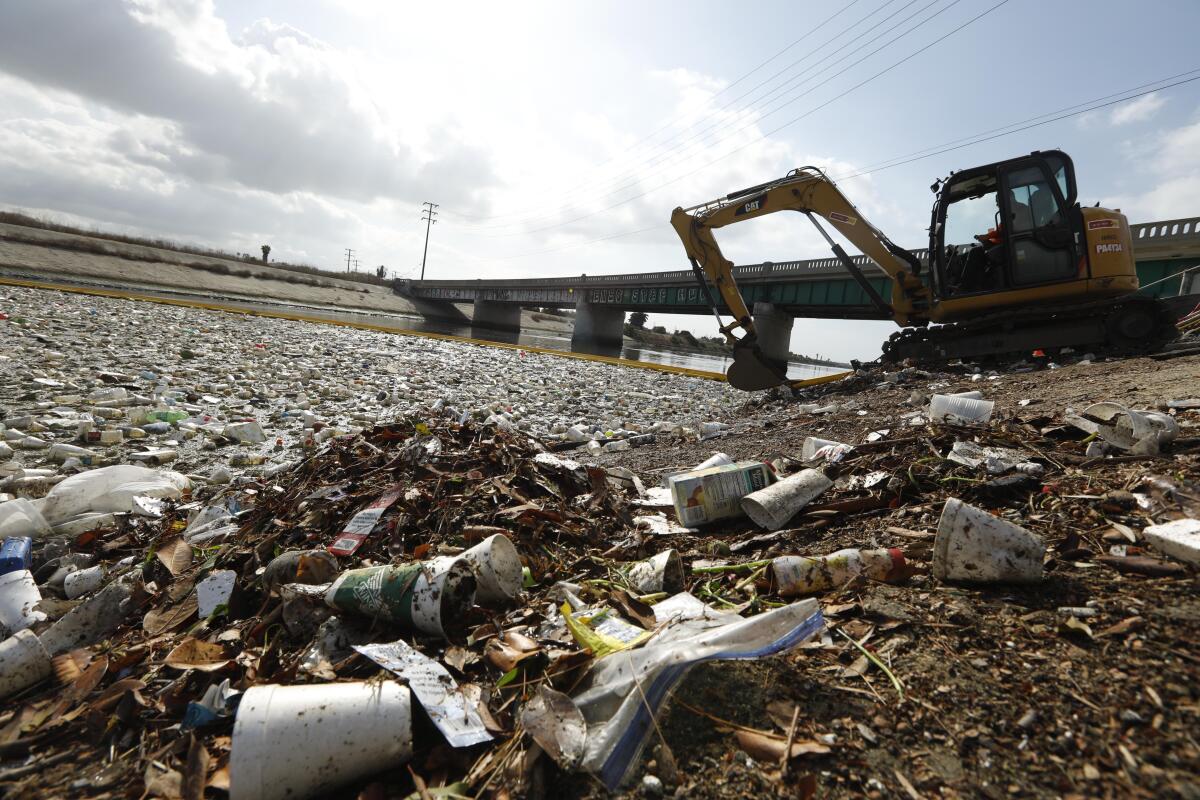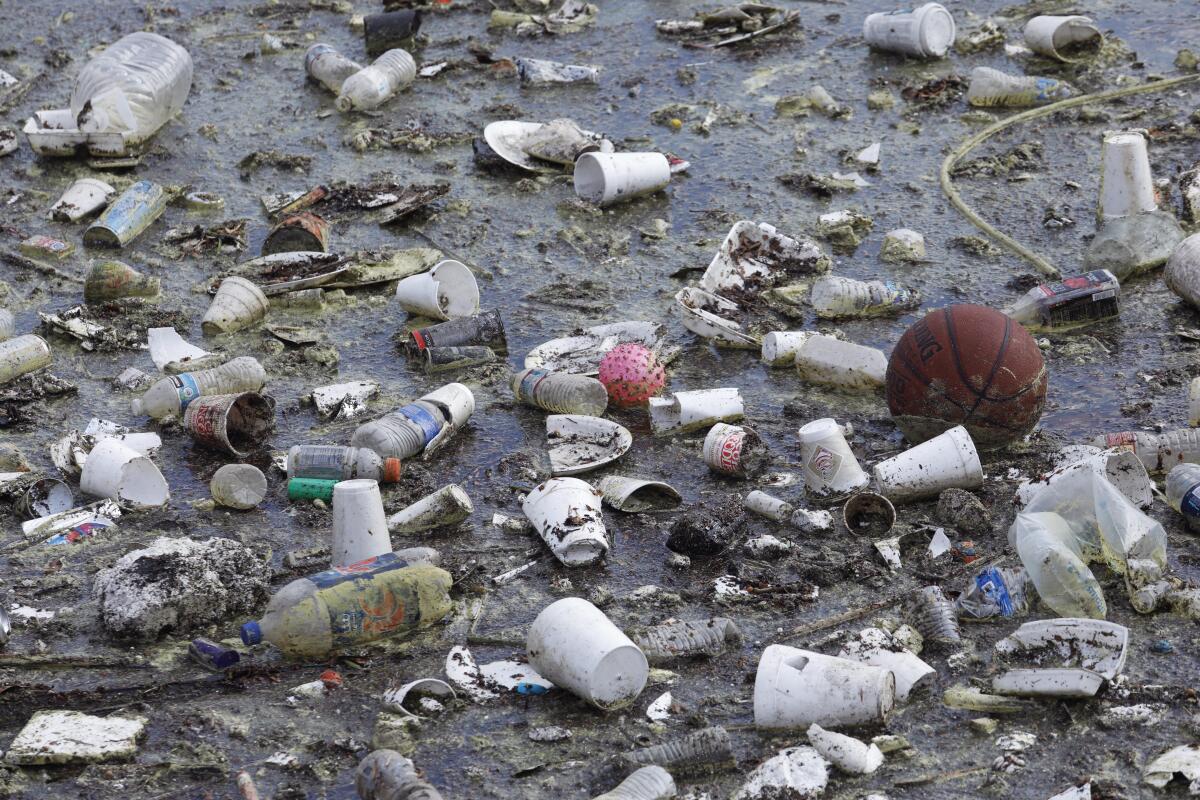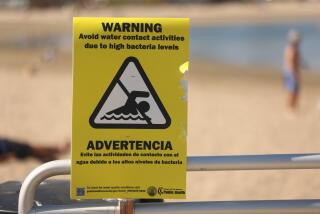Polluted stormwater is fouling L.A. beaches. Little has been done about it, report finds

- Share via
California’s storms do plenty of good, including replenishing the state’s water supply by filling its reservoirs and dampening the risk of wildfires. But the rainwater runoff also carries heavy pollutants that wash directly onto the shore, creating a toxic mix that’s unsafe for beachgoers.
Anyone who’s visited a beach after it rains has encountered such stormwater pollution, the unfiltered trash that piles onto the sand after flowing from rooftops, sidewalks and streets, picking up a trail of pesticides, bacteria, oil and grease before traveling through the storm drains.
After recent rains across Los Angeles County, an advisory was issued through Wednesday morning warning people not to swim near storm drains, where the greatest source of water pollution in the county lurks.
Such alerts are commonplace after Southern California storms, but a new report from the environmental nonprofit group Heal the Bay shows that little progress has been made in reducing such runoff from the county’s storm drain system.
Unlike sewage, which is filtered through treatment facilities before it’s discharged, stormwater is less regulated, said Annelisa Moe, a water quality scientist at Heal the Bay and the study’s lead author.
Researchers combed through six years of data, from 2012 to 2018, to examine how L.A. County has mitigated the issue, one that is most visible in the 72-hour aftermath of rainfall but persists during dry weather in the form of runoff from driveways and sidewalks.
As it turns out, not much has been done, largely because of a lack of transparent requirements when it comes to the monitoring of stormwater pollution by various municipalities.

The study marks the first comprehensive look at the growing problem of stormwater pollution. Its findings come ahead of a 2021 deadline for several watershed management groups to reduce stormwater pollution and the 2020 renewal of the county’s MS4 stormwater permit, which allows cities and counties to regulate stormwater discharge.
The permit was issued to the Los Angeles region in 1990 and was most recently renewed in 2012, when the latest stormwater requirements were set. But according to Heal the Bay, environmental groups have said that the existing permit is too lax to force major water quality improvements and fear that a renewed permit will be even weaker.
Of 12 watershed management groups studied, Heal the Bay determined that eight, including the upper Los Angeles River, Malibu Creek and Marina del Rey, are less than 10% of the way toward meeting their stormwater pollution reduction goals. Only one — the Dominguez Channel Watershed Management Group — was on track to reduce its pollution.

If the water groups fall short of their goals, Heal the Bay notes, it could put them out of compliance with federal Clean Water Act requirements. Under the current guidelines, L.A. County won’t achieve its collective clean water goal until 2082 — more than 60 years after the deadline.
It’s possible that new funding to improve stormwater quality, which will be allocated throughout Los Angeles County in 2020 from Measure W — also known as the Safe, Clean Water Program — could assist in cleanup efforts. Measure W is expected to bring in $300 million in annual parcel-tax revenue, which will be used to improve water quality and increase stormwater capture. Heal the Bay endorsed the measure in 2018.
“We’ve had 30 years to put plans together and start to implement them, and now we have funding opportunities,” Moe said. “There should be no reason we couldn’t see improvements in water quality.”

In Los Angeles County alone, there are 208 bodies of water that the California State Water Resources Control Board has identified as impaired, according to Heal the Bay. Polluted by bacteria, heavy metals, nutrients, pesticides and trash, those areas no longer can be used beneficially, such as for fishing, swimming and wildlife habitats.
“Stormwater has the potential to be a wonderful resource for water supply, recreation and so much more. But right now, it is more of a hazard polluting our waterways,” Moe said. “We need to step up cleanup efforts if we are to see water quality improvements in our lifetimes. We should not have to wait 60 years for clean water.”
More to Read
Sign up for Essential California
The most important California stories and recommendations in your inbox every morning.
You may occasionally receive promotional content from the Los Angeles Times.











